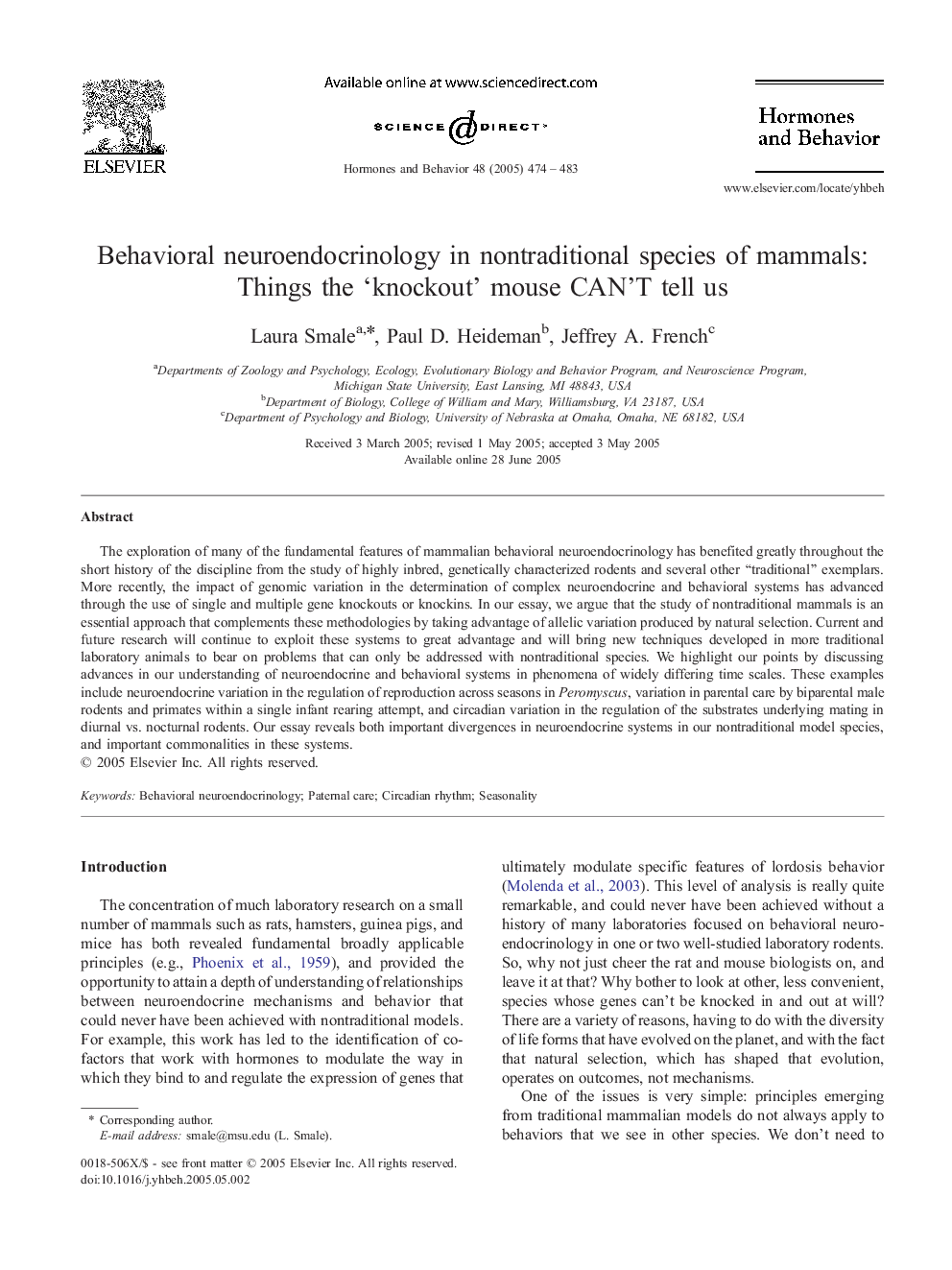| Article ID | Journal | Published Year | Pages | File Type |
|---|---|---|---|---|
| 10300741 | Hormones and Behavior | 2005 | 10 Pages |
Abstract
The exploration of many of the fundamental features of mammalian behavioral neuroendocrinology has benefited greatly throughout the short history of the discipline from the study of highly inbred, genetically characterized rodents and several other “traditional” exemplars. More recently, the impact of genomic variation in the determination of complex neuroendocrine and behavioral systems has advanced through the use of single and multiple gene knockouts or knockins. In our essay, we argue that the study of nontraditional mammals is an essential approach that complements these methodologies by taking advantage of allelic variation produced by natural selection. Current and future research will continue to exploit these systems to great advantage and will bring new techniques developed in more traditional laboratory animals to bear on problems that can only be addressed with nontraditional species. We highlight our points by discussing advances in our understanding of neuroendocrine and behavioral systems in phenomena of widely differing time scales. These examples include neuroendocrine variation in the regulation of reproduction across seasons in Peromyscus, variation in parental care by biparental male rodents and primates within a single infant rearing attempt, and circadian variation in the regulation of the substrates underlying mating in diurnal vs. nocturnal rodents. Our essay reveals both important divergences in neuroendocrine systems in our nontraditional model species, and important commonalities in these systems.
Related Topics
Life Sciences
Biochemistry, Genetics and Molecular Biology
Endocrinology
Authors
Laura Smale, Paul D. Heideman, Jeffrey A. French,
